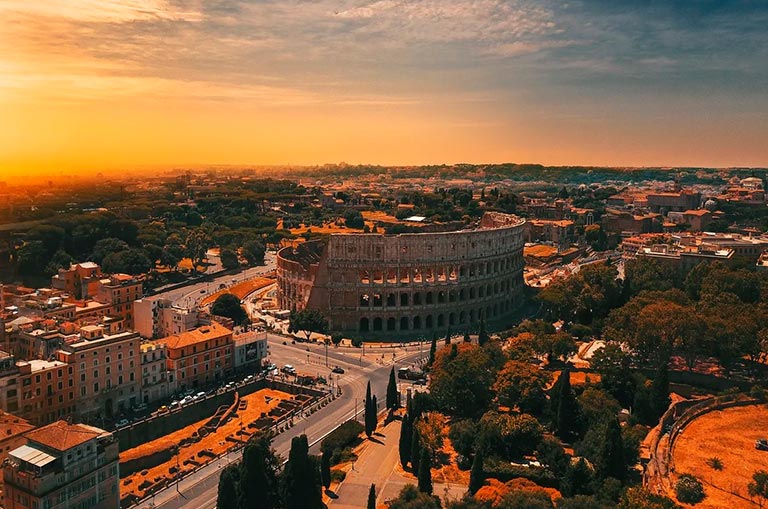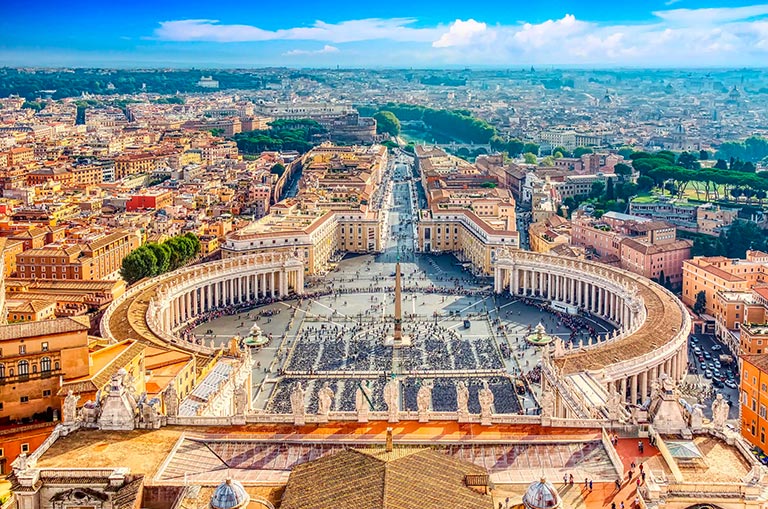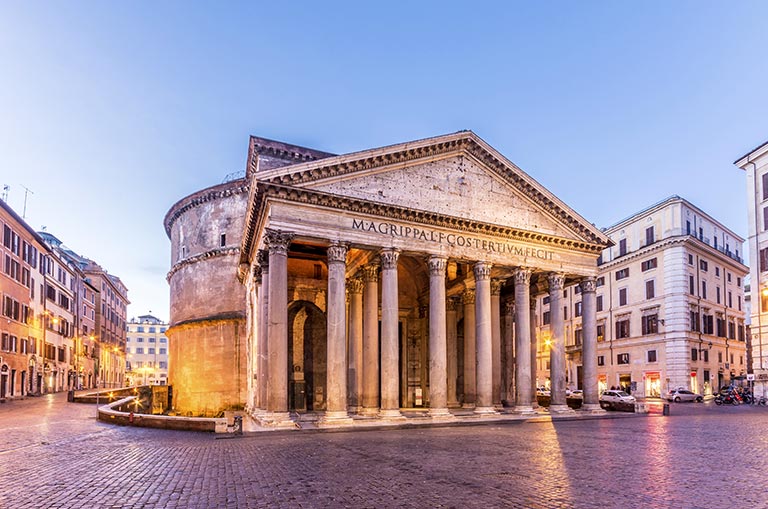Rome, the eternal city
Rome is the capital of Italy and one of the most popular tourist destinations in the world. Founded in the 8th century BC, Rome is rich in history, art and culture, with an unparalleled architectural and artistic heritage. Its historic center is a World Heritage Site and is home to some of the most impressive monuments of ancient Rome, such as the Colosseum, the Roman Forum and the Pantheon. It is also home to the Vatican and St. Peter's Basilica, the center of the Catholic Church.
The gastronomy is exquisite, with typical dishes such as pasta alla carbonara, pizza al taglio, porchetta and gelato, to name a few. The city has a wide cultural offer, with numerous museums, art galleries and events throughout the year, such as the Festa di Noantri and the Settimana della Cultura. The city's lively atmosphere is contagious, with a unique blend of ancient and modern.
In addition to the classic tourist sites, Rome has many interesting neighborhoods to explore, such as Trastevere, with its medieval architecture and cobblestone alleys, and Monti, a bohemian district full of designer stores and trendy bars. You can also enjoy nature in the Appia Antica regional park, one of Rome's oldest roads.
Translated with www.DeepL.com/Translator (free version)

Rome International Airport
Also known as Fiumicino, is Italy's largest airport and the main entry point to the city of Rome. With three terminals, it has a wide variety of services for travelers, including stores, restaurants, and public and private transportation options. In addition, the airport offers air connections to destinations around the world, making it an important international transportation hub.
Prepare your trip
The Quirinal Palace, former summer residence of the Popes, today is the official residence of the President of the Italian Republic. You can also visit the Barberini Palace, known for its impressive collection of Baroque paintings. Piazza Navona is one of the most emblematic places and the perfect starting point to explore the historic center of the city, where you can find narrow and picturesque streets, full of life and color.
La Fontana di Trevi
It is one of the most impressive baroque fountains located in the heart of Rome, and is one of the largest and most famous in the world. It was built in the eighteenth century and represents the legend of Neptune, the god of the sea, who emerges from the waters. Composed of a central structure, flanked by two statues of tritons, it has a cascade of water flowing into the central pool.
One of the most emblematic places in Rome and one of the most popular tourist destinations. Visitors often throw in a coin, which, according to legend, guarantees their return to the city. It is also famous for its beauty and magnificent sound and light show, which takes place every night. A must on any tourist itinerary and an architectural marvel that will not disappoint visitors.
In addition to being a tourist landmark, it has also been an iconic place in film and popular culture, appearing in movies such as Fellini's "La Dolce Vita" and "Roman Holiday" with Audrey Hepburn and Gregory Peck.

The Vatican
The Vatican is a small independent state within the city of Rome, Italy, and is home to the Pope, leader of the Roman Catholic Church.
It is the seat of the church's government and is considered one of the holiest places in Christianity. Its territory covers only 44 hectares and has a population of approximately 800 people, most of whom are religious or employees of the Vatican.
In addition to being considered the main religious center, it is also an important tourist destination due to its rich history and artistic heritage, which includes the Sistine Chapel and St. Peter's Basilica, among other great works. The official language is Latin, although Italian is also widely spoken. Its economy is based mainly on the sale of religious souvenirs, admission to museums and the sale of stamps and coins.

The Pantheon of Rome
It is one of the oldest and best preserved monuments of the city, dedicated to all the gods and built in 27 BC by order of the consul Marcus Vipsanius Agrippa. The original building was destroyed by fire in 80 AD and the Emperor Hadrian rebuilt it in 118 AD.
Its 43-meter diameter dome is made of concrete and has an oculus in the center, which allows natural light to enter and also acts as a ventilation system. Famous for its unique architecture and the beauty of its interior design, it includes impressive marble details, reliefs and sculptures.
It has been a place of worship for centuries and used as a Christian church since the 7th century. Inside, there is the tomb of the Renaissance artist Raphael and several other important historical figures. Admission is free and it is open every day, although schedules may vary depending on special events or religious ceremonies.

Road safety regulations
In Italy, road safety regulations must be strictly followed. Roads are generally of good quality, although you may encounter potholes in certain areas. Italian roads are divided into freeways (paid), dual carriageways and national roads (free of charge). Speed limits apply and they are mostly monitored by security cameras.
Fines for speeding or driving under the influence of alcohol are very high and the Italian police do not tolerate any violations.
In Italy, people drive on the right and overtake on the left, and parking spaces are marked with white or blue stripes on the ground. It is illegal to park in places marked with yellow lines or where there is a "No Parking" sign.


